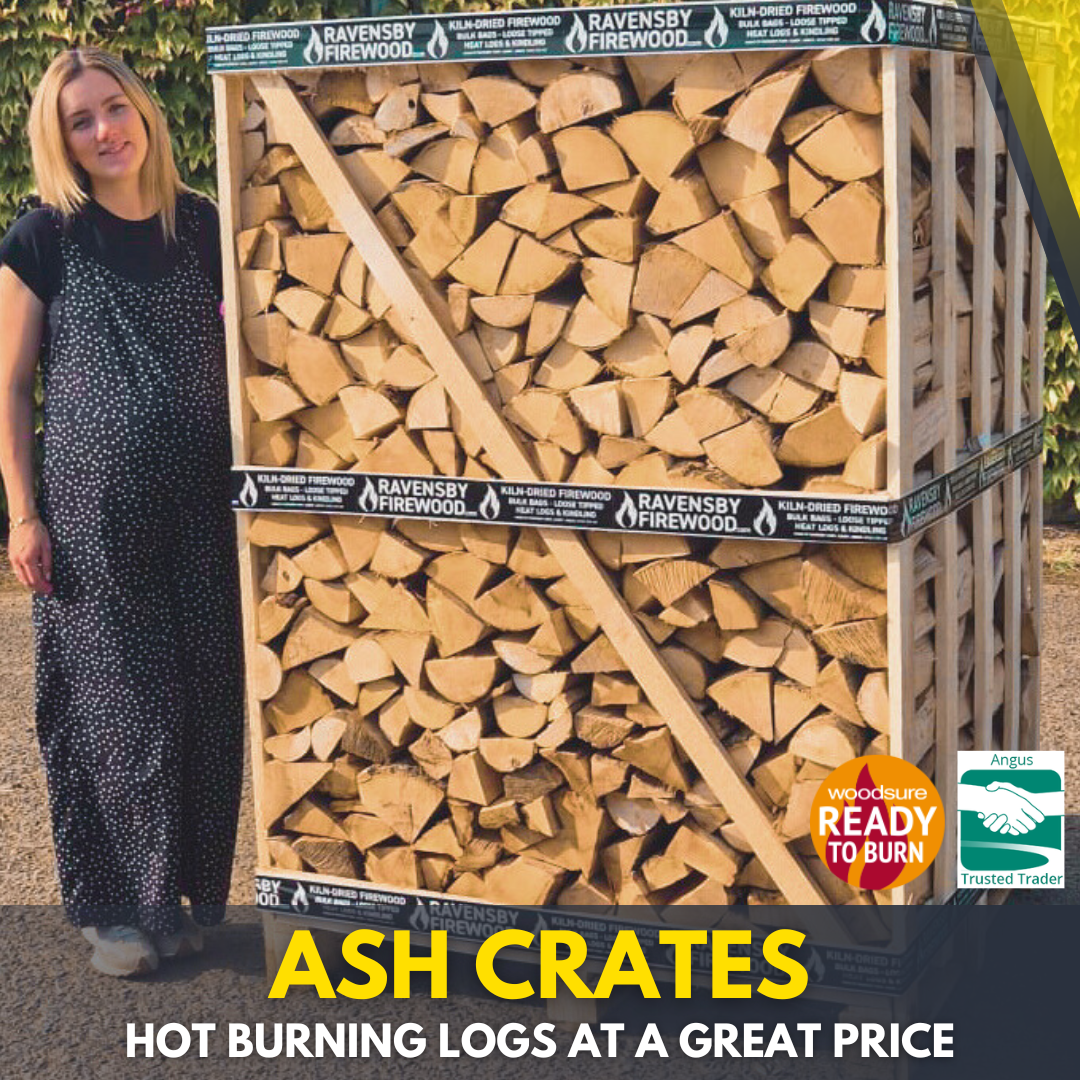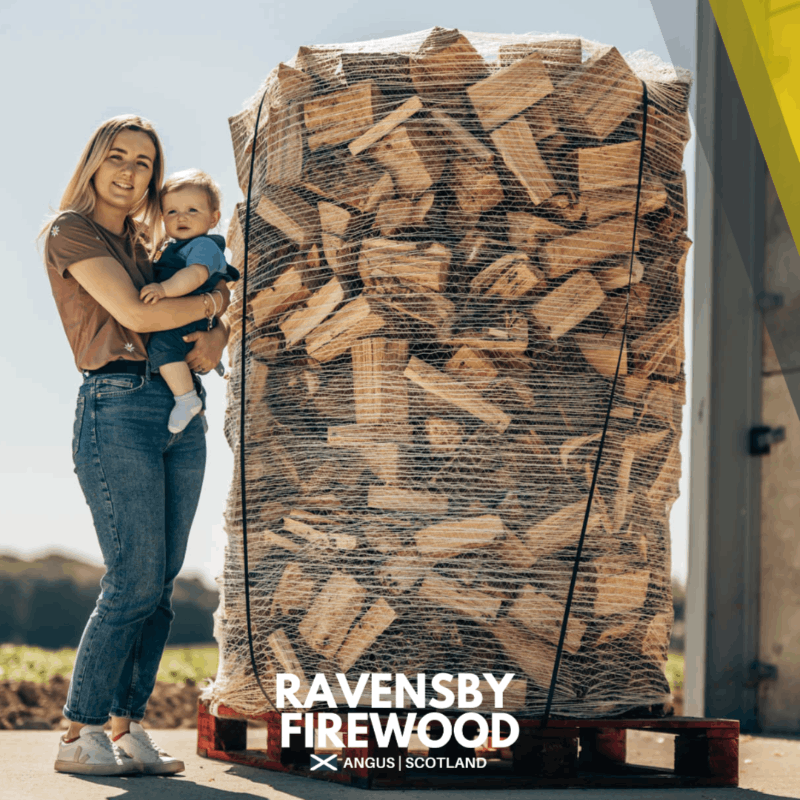Households across Scotland, England and Wales rely on wood burners and open fireplaces for warmth and ambience. The choice of firewood affects everything from heat output to air quality and convenience. Two main types of fuel are available: seasoned logs and kiln‑dried logs. This article explores why kiln‑dried firewood is often the better choice and provides tips for storing your logs so they stay dry and ready to burn.
Comparing Kiln‑Dried and Seasoned Wood
Seasoned logs are left to dry naturally for months or years. Even in ideal conditions, moisture content often remains around 25 per cent. Kiln‑dried logs, by contrast, are dried in controlled kilns until they reach below 20 per cent moisture content. This difference in moisture has a big impact on performance.
Heat and Efficiency
When you burn wood with a high moisture content, much of the energy goes into drying the wood, leaving less heat for your room. Kiln‑dried logs ignite quickly and produce a strong, steady flame. Because there is less water to evaporate, more of the log’s energy becomes usable heat. You need fewer logs to achieve the same warmth, saving money in the long run.
Clean Burn and Air Quality
Incomplete combustion leads to smoke and tar. Seasoned logs with higher moisture smoulder, producing more soot that can clog chimneys and pollute indoor air. Kiln‑dried logs burn cleaner, which reduces creosote build‑up and prolongs the life of your stove and flue. Cleaner combustion also means fewer particles released into the atmosphere.
Consistency
Seasoned firewood can vary widely in dryness and quality because it depends on weather and storage conditions. A batch delivered one year may burn well while another may not. Kiln‑dried logs offer consistency; each crate or bag is dried to the same standard. When you choose a supplier like Ravensby Firewood, you know every load will perform predictably.
Environmental Considerations
Kiln‑drying requires energy, but responsible suppliers often use waste wood or biomass to power their kilns. Ravensby Firewood recycles offcuts from processing as fuel, reducing waste. When wood is sourced from well‑managed forests and burned efficiently, the environmental footprint is far lower than that of wet logs that produce heavy smoke and soot.
Delivery Options Across Scotland and Beyond
Ravensby Firewood delivers kiln‑dried logs locally in Angus, Dundee, North Fife and Perthshire and ships crates and grab nets nationwide. Orders to England and Wales generally arrive within a week, while island deliveries take a little longer. Make sure your property has space for a pallet and level access. If you have special requirements, contact the supplier—local deliveries often provide more flexibility.
Storing Your Logs Properly
Once you’ve invested in kiln‑dried firewood, preserving its dryness is essential. Poor storage can undo the benefits of kiln‑drying. Follow these guidelines to keep logs ready to burn:
-
Elevate and ventilate: Place logs on pallets or racks to keep them off the ground. Stack them loosely to allow air to circulate. Avoid stacking against a wall where moisture can accumulate.
-
Cover the top: Protect the stack from rain by covering just the top with a waterproof sheet, leaving the sides open. Complete wrapping can trap moisture.
-
Choose a dry location: If storing in a garage or shed, ensure the space is well ventilated. Damp or unheated spaces can raise moisture levels.
-
Rotate your supply: Use older logs first. When you receive a new delivery, stack it behind the existing wood to maintain a first‑in, first‑out system.
-
Indoor acclimatisation: Before burning, bring logs indoors for a day. This helps dry off any surface moisture and improves ignition.
By taking care of storage, you maintain the low moisture content that makes kiln‑dried logs such an effective fuel.
Supporting Local Suppliers and Responsible Forestry
Purchasing firewood from a reputable, local company benefits both the environment and the economy. Ravensby Firewood is a family‑run business near Carnoustie in Angus. They are part of the Trusted Trader scheme and hold Ready to Burn certification, which ensures logs meet strict quality and sustainability standards. The company sources wood from forests managed under Forestry Commission guidelines, planting new trees for those harvested and protecting wildlife habitats.
Supporting local suppliers keeps money in the regional economy and reduces the carbon cost of transport. It also gives you confidence that the logs are responsibly sourced and that your purchase contributes to sustainable woodland management. Working with a certified supplier means you receive reliable, high‑quality fuel and good customer service.
Estimating How Much Wood You Need
How many logs you need depends on stove efficiency, home size and usage. Modern stoves are efficient, but large properties or constant burning will consume more wood. Some households in Angus or Dundee might use a compact crate every couple of months, while occasional users need only a few grab nets. Keeping a small reserve prevents running out during cold spells. The Ravensby team can offer advice and supply trial packs if you’re unsure which crate size suits you.
Conclusion
Kiln‑dried firewood offers clear advantages over seasoned logs. With lower moisture content, it lights quickly, burns hotter and produces less smoke and residue. Although kiln‑dried logs may cost a bit more, their efficiency means you use fewer logs to achieve the same heat, balancing the cost. They provide consistent quality, so you know what to expect with every order.
Proper storage ensures that the logs stay dry and ready for use. By elevating the stack, allowing air to circulate and rotating the supply, you preserve the benefits of kiln‑drying. Buying from a trusted local supplier like Ravensby Firewood means you support sustainable forestry and the local economy while enjoying reliable deliveries across Scotland and the UK. Whether you live in a rural village or a major city, kiln‑dried logs can make your fireplace or stove safer, cleaner and more efficient all winter long.





